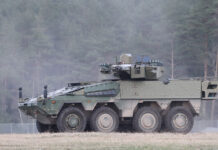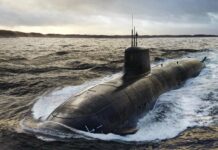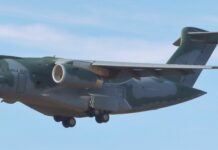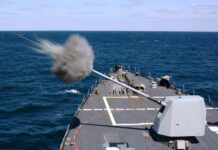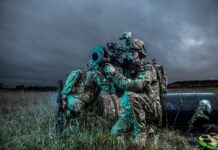Australia intends to replace its Heavy Armoured Capability Systems (HACS), with the existing 59 M1A1 ABRAMS Main Battle Tanks (MBTs) being replaced by the new M1A2 SEPv3 version from 2024. Australian Defence Minister Peter Dutton announced that a total of 3.5Bn Australian dollars (US$2.51Bn) would be invested in the “Main Battle Tank Upgrade” project, to be implemented in the scope of the LAND 907 Phase 2 procurement effort, and the associated “Combat Engineering Vehicle” (Land 8160 Phase 1).
Background
The Australian Army was equipped with LEOPARD 1 AS1 MBTs from 1976 to 2007. When these had to be replaced at the end of their service life, the M1A1 ABRAMS was selected following a competitive tender.
In April 2021, the US Government agreed on an FMS case for Australia to acquire 160 armoured vehicles including hulls, as well as six M88A2 HERCULES armoured recovery vehicles and 122 AGT gas turbines for an equivalent value of US$1.7Bn (€1.5Bn). As prime contractors, General Dynamics, BAE Systems, Leonardo DRS, and Honeywell Aerospace will supply kits for the M1-based vehicles, which are to be finally assembled by Australian companies.
Australia thus plans to build:
- 75 M1A2 SEPv3 ABRAMS MBTs (16 more tanks than it has in its current inventory)
- 29 M1150 armoured mine-clearing vehicles
- 18 M1074 armoured bridge layers
The six M88A2s will bring the number of armoured recovery vehicles in the inventory to 13.
The M1A2 SEPv3 is the most modern version of this MBT, which has been in service with the US Army since 1981. Currently, the US Army is being equipped with up to 1,500 tanks of this new version. Poland will receive the first tanks of this standard in the course of the year.
Planned HACS Enhancements
The performance upgrade affects all core areas of the vehicles: command, firepower, protection and mobility, with the aim of simultaneously increasing crew survivability and system efficiency (lethality). Furthermore, it was a goal to once again create room for growth potential. In this respect, the version also known as the M1A2C becomes the basic version for future performance upgrades.
While the 120 mm L/44 gun from Rheinmetall has remained unchanged, the fire control system was upgraded to handle modern ammunition (such as programmable ammunition). The remote-controlled weapon station has been reduced in height to improve the visula signature of the tank. The most important element for reconnaissance is the new third generation Forward Looking Infrared (FLIR) imaging sensor. With a higher resolution and digital image processing, the system enables the detection of enemy signatures at longer distances, even in rain, dust or fog.
To satisfy the increasing hunger for energy of electrical devices of all kinds, an Auxiliary Power Unit (APU) was installed, which – when the main engine is not running – provides enough energy to operate all electrical/electronic devices (silent watch). The APU also relieves the turbine of the main engine, which is known to be particularly uneconomical in the low-load range.
The condition of the equipment is constantly monitored and consolidated in a Vehicle Health Management System (VHMS) so that preventive and predictive maintenance can be planned. In all areas, the use of Line Replaceable Modules (LRMs) is being pushed, which speed up diagnosis and replacement and reduce the duration of service interruptions due to repairs. New passive elements (some with depleted uranium) are used for improved protection, (Makeshift) explosive charges can be repelled more effectively. Mounts are available to accommodate ABRAMS Reactive Armor Tiles (ARAT) and the TROPHY Active Protection System.
Different Variants
The M1150 Assault Breacher Vehicle (AVB) is based on the chassis of the M1 ABRAMS and equipped with a mine plough and mine-clearing missiles. The 4.5 m wide mine plough is pushed in front of the vehicle through the area to be cleared and is guided by three skids. The Linear Demolition Charge System pulls an explosive cord up to 100m in front of the vehicle. By detonating the explosive, mines, IEDs, etc. are triggered in the vicinity, creating a mine alley about eight metres wide and about 100 metres long.
The M1074 armoured bridge layer also uses the M1 ABRAMS chassis. It carries a two-part, 3.66m wide combat bridge made by Leonardo DRS for vehicles up to military load class MLC 95. The bascule scissor bridge is launched hydraulically and can bridge waterways/terrain cuts of up to 18.3m wide.
The M88A2 Heavy Equipment Recovery Combat Utility Lift and Evacuation System (HERCULES) armoured recovery vehicle is a heavy tracked vehicle for recovering and shifting off combat vehicles with high dead weights. Characteristics are the crane, which is up to eight metres high as an A-mast with a maximum lifting capacity of 35 tonnes, and a winch with a pulling force of 70 tonnes (with double rope). With a dead weight of 70 tonnes, it reaches its performance limit towing the M1A2. With the new vehicles, the Australian Army aims to achieve initial operational capability by 2025.




